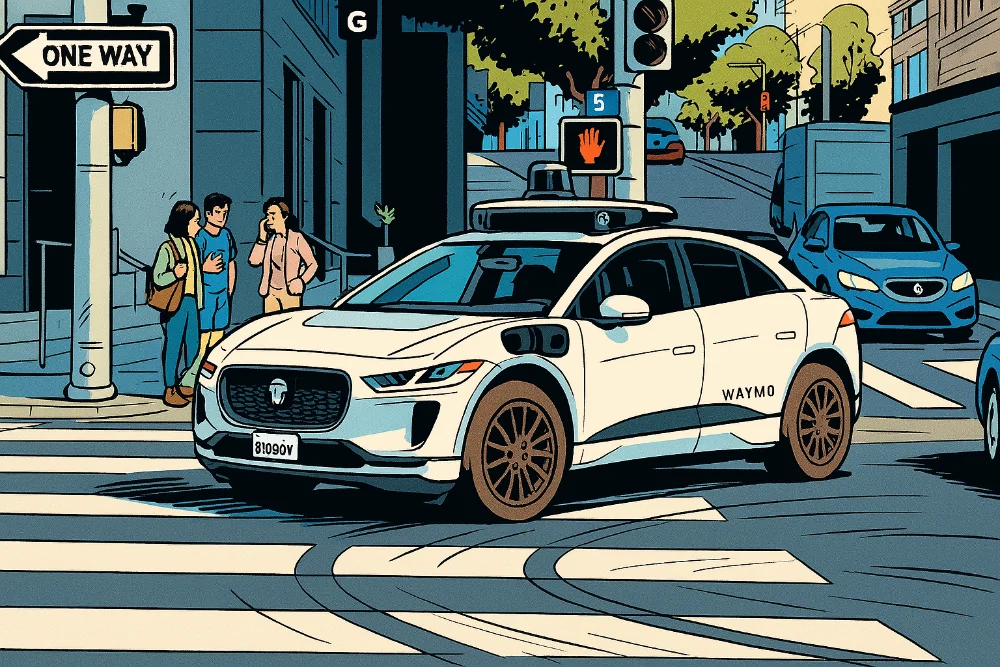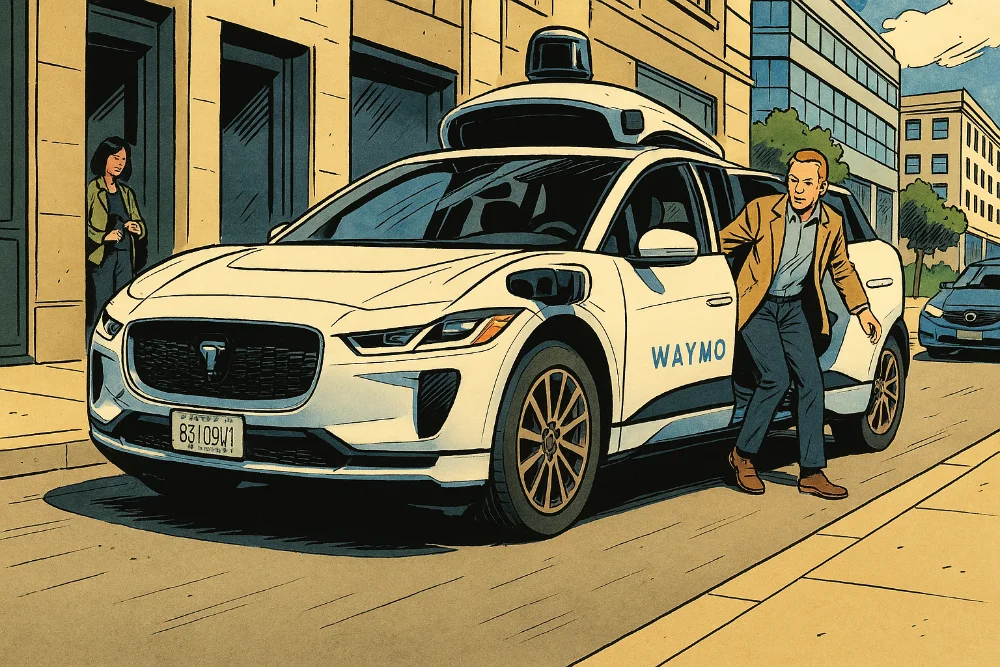As you know, the wicked IA will surely steal our jobs soon because mediocrity collectively inhabits us. And we can’t do anything against that but the good news is that they are already starting to save our lives on the road.
I know, I know, you are not yet mentally solid enough to entrust the steering wheel to an artificial intelligence but believe me, it is pretty good! And for once, we have figures to prove it since Waymothe autonomous driving subsidiary of Google, has just revealed stats that pass humans for potential drivers (what we are, especially guys).
Indeed, a recent study involving Swiss Re, one of the world’s largest reinsurers, has just revealed a fact that I hope, will change your perception of autonomous cars: out of 25.3 million miles traveled (around 40 million kilometers), Waymo cars have only generated 9 complaints for material damage and 2 for body injuries. To put this in perspective, human drivers would have caused 78 and 26 complaints to the same distance respectively.
To be even clearer, Waymo cars are 88% less likely to cause an accident with material damage and 92% less likely to cause an accident with bodily injuries than the average of human drivers. And the most beautiful is that they even surpass recent car drivers equipped with the state -of -CRI driving aid systems (ADAS), which are already statistically safer than average.
Between July 2024 and February 2025, Waymo thus brought back 38 accidents serious enough to trigger an airbag or cause an injury. Of these 38 accidents, only one was clearly Waymo’s fault. 3 others were potentially attributable to the system, but without certainty.
And the other 34? Completely the fault of human drivers!
And that may be the most revealing point because most accidents involving a waymo occur because the autonomous vehicle scrupulously respects the rules, while a human driver breaks them. At this point, we should therefore seriously consider the possibility that entrusting your life to a robot is statistically safer than getting into the car of your stepfather which “knows a shortcut”Or a random blablacar in 106 which has just had its license.
As a reminder, Waymo detects its environment thanks to a combination of Lidar, radar, and high definition cameras which scrutinize in all directions permanently. Suddenly, unlike your Primate brain that has grown to hunt mammoths and not at all to manage a 1.5 -ton vehicle launched at 130 km/h, Waymo algorithms were specifically designed for this task.
There are many advantages:
- No fatigue, distraction, SMS during driving
- No alcohol, drugs or drugs in the system
- Reaction time in milliseconds rather than seconds
- Obsessive respect for speed limitations and safety distances
- 360 ° vision without dead angles
As a note Timothy B. Leea specialized journalist: “Most Waymo accidents involve a Waymo vehicle that scrupulously respects the rules while a human driver breaks them: speeding, grilling a red light, getting out of his way, etc.»
Moreover, the best example of the superiority of autonomous systems is perhaps their behavior during inevitable accidents. The first fatal accident involving a waymo occurred on January 19 in San Francisco. A waymo was stopped in a red light, another car behind it. An SUV led by a human hit these vehicles at high speed, causing a pile up involving six vehicles. One person died and five others were injured.
Another major accident took place in October 2023, also in San Francisco. Once again, a waymo was stopped at a red light. A vehicle circulating in the opposite direction has crossed the midline and struck a SUV arrested next to the Waymo. The impact projected the SUV against the Waymo. One person was seriously injured.
In both cases, the Waymo vehicle had taken the asset as possible and perfectly respected the rules. The accident was entirely due to the reckless or illegal behavior of a human driver.
Waymo goes even further with features like “Safe Exit”, Designed to avoid accidents when passengers leave the vehicle. According to the San Francisco Municipal Transportation Agency, collisions with cyclists when opening a door are the second most frequent cause of serious or fatal body accidents.
And unlike VTC with human driver who can simply remind passengers to pay attention, Waymo uses its sensor system to actively detect cyclists or other users approaching, and warns passengers by explicit audio and visual alerts. The vehicle even displays icons on its Lidar to report to other users that a climb or descent of passengers is in progress.
These data have major implications for our future. First, for car insurance because if autonomous vehicles are proven statistically safer, insurance premiums for human drivers could increase, while those of autonomous fleets would decrease. This is why reinsurers like Swiss are looking closely at this data.
We can also start dreaming of cities where most accidents are avoided, where traffic jams decrease thanks to more fluid and predictable traffic, and where parking becomes a problem with the past thanks to vehicles that park themselves or simply continue to circulate to transport other users.
And above all, for world road safety, with 1.35 million deaths on the roads each year, the saved life potential is colossal. Autonomous driving could make roads as safe as air transport, where I remind you, fatal accidents have become extremely rare thanks to automation.
Despite these impressive results, there are still several obstacles before general adoption:
- Acceptance of the public: the gap is enormous between the perception of risks and statistical reality
- Difficult conditions: abundant snow, thick fog or rural areas without precise cartography remain problematic
- The regulatory framework: in France and in Europe, legislation is advancing at the speed of an asthmatic snail
- Cohabitation with human drivers: ironically, the greatest danger for autonomous cars is & mldr; Human drivers
This last point is crucial and partly explains why autonomous driving is so difficult to perfect. AI must not only respect the rules, but also anticipate the irrational because as the analysis of accident videos shows, the waymo often try to avoid collisions caused by drivers who act unpredictable or illegal.
Here, the data is there and it is now indisputable! Waymo autonomous vehicles are really safer than human drivers, even the most experienced and with the most recent vehicles.
This announces a radical change in the years to come, if one day France is finally decided to apply UN amendment 157 which is already entering its 2nd year. This amendment widens a little more the conditions making autonomous conduct possible, but good, between study committees, preliminary relationships and traditional “French cultural exception”Faced with innovation, our cars will probably have time to develop their own conscience before the administration gives its green light.
Source link
Subscribe to our email newsletter to get the latest posts delivered right to your email.






Comments